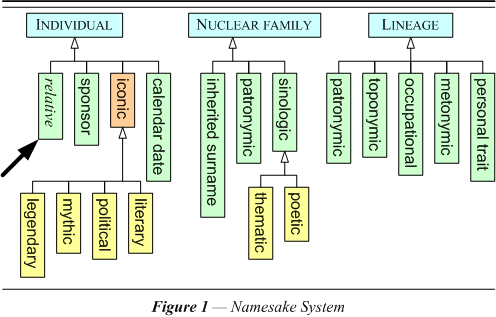
In a fashion similar to the formalization of names for people, places, and dates, the terms used in English to designate a person’s relatives may also be characterized for interpretation by rules that are culturally based. One example of the importance of the analysis of kinship terms is in the specification of namesakes. When people are named after a relative, the culture has a lot to do with how this relative is referred to and which relative gets precedence in becoming the namesake.

Figure 1 lists the various objects that can act as a namesake for children in many Western cultures. The child might get his name from that of a relative, a sponsor at baptism, or from some prominent person in society. The name may also be the name of the saint to whom the day of the ecclesiastical year upon which the child was born is dedicated. The individual may also carry the name of his nuclear family. Usually the surname is the family name, but might in some places be based on the father’s given name. In China there is such a name found in the generational name carried by some of the male children. Similarly the surname may be based on the name of the person’s lineal family. This surname might originally have been based on any one of various kinds of names.
